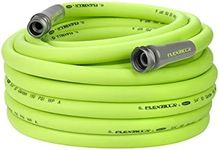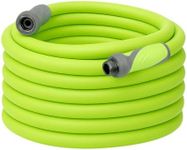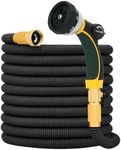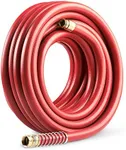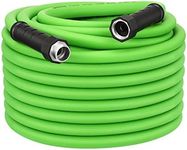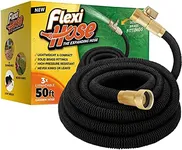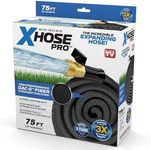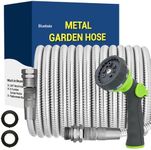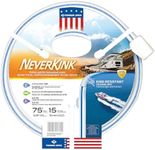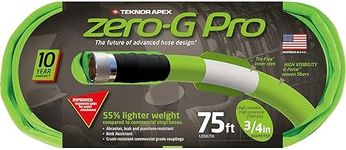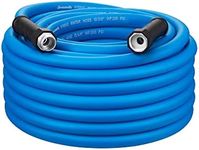Buying Guide for the Best 75 Foot Garden Hoses
Choosing the right 75-foot garden hose can make your gardening, cleaning, or outdoor chores much easier and more efficient. The key is to find a hose that matches your needs in terms of durability, flexibility, ease of use, and the type of tasks you plan to tackle. By understanding the main features and specifications, you can avoid common frustrations like kinking, leaking, or struggling with a hose that's too heavy or too flimsy. Think about how often you'll use the hose, the water pressure in your area, and the climate, as these factors can influence which hose will serve you best.MaterialThe material of a garden hose determines its durability, flexibility, and resistance to weather and kinking. Common materials include vinyl, rubber, and reinforced or hybrid blends. Vinyl hoses are lightweight and affordable but may not last as long or withstand high water pressure. Rubber hoses are heavier but much more durable and flexible, making them suitable for frequent use and tough conditions. Reinforced or hybrid hoses combine materials for a balance of strength and flexibility. If you need a hose for light watering or occasional use, vinyl might suffice, but for regular or heavy-duty tasks, a rubber or reinforced hose is a better choice.
DiameterThe diameter of a garden hose affects how much water flows through it at a given time. Common diameters are 1/2 inch, 5/8 inch, and 3/4 inch. A 1/2-inch hose is lighter and easier to handle but delivers less water, making it suitable for small gardens or light watering. A 5/8-inch hose is the most common and offers a good balance between water flow and manageability, fitting most home needs. A 3/4-inch hose delivers the most water and is best for high-volume tasks like filling pools or using sprinklers over large areas. Choose the diameter based on the size of your garden and the types of tasks you need to perform.
Flexibility and Kink ResistanceFlexibility determines how easy it is to maneuver the hose around corners, trees, or garden beds, while kink resistance prevents the hose from twisting and blocking water flow. Some hoses are designed with special materials or internal reinforcements to reduce kinking. Highly flexible hoses are easier to coil and store but may be more prone to kinking if not reinforced. If you often move your hose around obstacles or need to store it in tight spaces, look for a hose advertised as kink-resistant and flexible. For mostly straight runs or stationary use, flexibility may be less important.
WeightThe weight of a garden hose affects how easy it is to carry, drag, and store. Heavier hoses, often made of rubber or reinforced materials, are more durable but can be tiring to move, especially over long distances like 75 feet. Lighter hoses are easier to handle but may be less robust. If you have limited strength or need to move the hose frequently, a lighter hose may be preferable. For stationary use or if durability is your top concern, a heavier hose might be worth the extra effort.
Couplings (Fittings)Couplings are the metal or plastic ends of the hose that connect to your faucet or nozzle. Brass couplings are the most durable and leak-resistant, while aluminum is lighter but can corrode over time. Plastic couplings are lightweight and inexpensive but may break or leak more easily. If you plan to connect and disconnect your hose often, or if you want a long-lasting, leak-free connection, brass couplings are the best choice. For occasional use or if weight is a concern, aluminum or plastic may be sufficient.
Burst PressureBurst pressure is the maximum water pressure a hose can handle before it fails. This is usually measured in pounds per square inch (PSI). Most home water systems operate well below 100 PSI, but hoses are often rated for 200 PSI or more. If you use high-pressure nozzles or connect your hose to a pressure washer, a higher burst pressure rating is important. For regular watering tasks, a standard burst pressure rating is usually sufficient.
UV and Weather ResistanceUV and weather resistance refers to how well a hose can withstand exposure to sunlight, heat, cold, and other outdoor elements. Hoses with UV protection won't crack or degrade as quickly when left outside, and those rated for weather resistance can handle freezing or very hot temperatures. If you plan to leave your hose outdoors year-round or live in an area with extreme weather, look for hoses with these protective features. For indoor storage or mild climates, this may be less critical.




